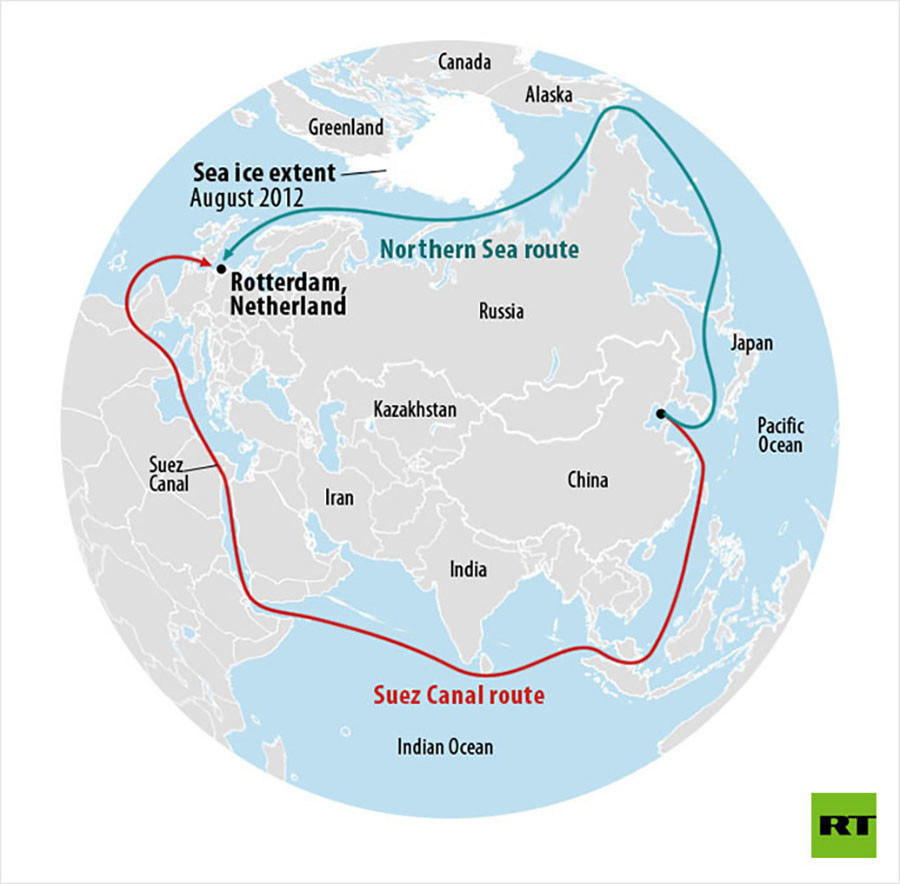Northern Maritime Sea Route Cargo Volume Could Reach 92 Million Tons By 2024
China-EU Arctic Cargo Transshipment Route Developing Fast
Alexey Likhachev, the Director-General of Rostacom, Russia’s State Atomic Energy Corporation has stated that the volume of cargo transported via Russia’s Northern Sea Route (NSR) is constantly growing and could top expectations by the end of this year. Rosatom is an infrastructure operator for the route.
“The plan for this year’s freight traffic along the Northern Sea Route was 29 million tons, but today our forecast is that it will exceed 32 million tons,” Likhachev told Rossiya 24 TV channel. Earlier, he said that by 2024 the volume of freight transportation via the NSR could reach 92.6 million tons.
The NSR, which stretches the entire length of Russia’s Arctic and Far East regions, is expected to become a major trade route for goods shipped between Europe and Asia.

According to President Vladimir Putin, the route is “the key to the development of the Russian Arctic regions of the Far East,” and the goal is to make it a “truly global, competitive transport artery.” The Russian President plans on having NSR cargo traffic significantly increase up to 80 million tons a year. Ships will mainly transport liquefied natural gas, oil, and coal. The Arctic route from Southeast Asia to Europe cuts transportation time in half, compared to traditional routes through the Suez and Panama canals. In Soviet times, it was mainly used to supply goods to isolated settlements in the Arctic.
Today, China in particular sees it as the most cost-effective supply chain route to transport goods to and from Europe, while Russia sees it as key to opening up the Arctic region. Russia has recently established the entire Russian Arctic as a Special Economic Zone providing significant tax benefits. The Russian Arctic city of Murmansk is the regional capital at the European end of the route and will develop as a major Port serving shipping along the NSP. At the other end is Vladivostok, the capital of the Russian Far East with easy and nearby access to China, as well as Japan and South Korea.
The route is spurring additional infrastructure with Smart Roads between Russia and Norway, Rail infrastructure from Arctic Europe to the Baltics, and Japan and South Korea already establishing rail routes along what they term the Trans-Siberian Land Bridge which Russia is also looking at linking to a redeveloped Polar Rail network, expected to be completed by 2030.
Related Reading
- The Northern Sea Passage Between Europe and Asia – Russia’s Developing Arctic Ports
- The Arctic Link: Connecting Norway, Sweden, and Russia to China Trade
- China’s Maritime Arctic Silk Road on Ice
About Us
Silk Road Briefing is written by Dezan Shira & Associates. The firm has 28 offices throughout Asia, and assists foreign investors into the region. For strategic advisory and business intelligence issues please contact the firm at silkroad@dezshira.com or visit www.dezshira.com





